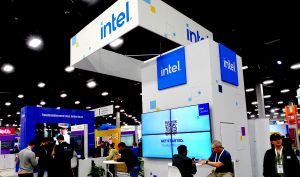Firefox OS and Nokia enter the affordable smartphone race
![]() The Mobile World Congress is in full swing, and one of the major trends we’ve seen so far is the rise of the affordable smartphone. Much attention has been given to Mozilla’s Firefox OS phones, which seem to be winning people over thanks to their low price point and decent user experience, and also to Nokia, which is using Google’s Android OS for its X phone family – a seemingly awkward fit for a company that’s so heavily associated with Microsoft’s Windows Phone.
The Mobile World Congress is in full swing, and one of the major trends we’ve seen so far is the rise of the affordable smartphone. Much attention has been given to Mozilla’s Firefox OS phones, which seem to be winning people over thanks to their low price point and decent user experience, and also to Nokia, which is using Google’s Android OS for its X phone family – a seemingly awkward fit for a company that’s so heavily associated with Microsoft’s Windows Phone.
It’s no surprise that OEMs are so focused on affordable smartphones. The word is from a number of analyst research firms that the world will have another billion or so new internet users in the next few years, and most of these will be in developing countries, accessing the web through their mobile phones. That’s why Mozilla’s strategy seems so convincing. It’s Firefox OS is targeted directly at these new internet users, and we saw a number of new devices introduced this week – the Alcatel One Touch Fire C, Fire E, Fire S phones and Fire 7 tablet, plus ZTE’s Open C and Open II – as well as some software improvements. No prices were given for the new devices, but previous Firefox OS phones have fallen in the $90 to $180 range.
Mozilla didn’t just turn out some new devices and improved software though. It also hit the headlines with its promise to deliver $25 Firefox OS smartphones later this year, thanks to a new partnership with Chinese chipmaker Spreadtrum. The non profit also said it was planning to expand its phones into new markets, including Argentina, Costa Rica, El Salvador, Guatemala, Nicaragua and Panama, plus Africa and Asia.
![]() Nokia’s strategy seems less clear. The company says that its Android-toting X Phones will help it to aggressively attack the affordable smartphone niche, but it remains to be seen how this will fit with Microsoft’s own ambitions of building lower priced Windows Phones for markets like China and India. Nokia’s X Phones are also pretty expensive compared to those of Mozilla – for example, the Nokia X will cost in the region of $122, while the Nokia X+ and Nokia XL come with price tags of $136 and $150 respectively.
Nokia’s strategy seems less clear. The company says that its Android-toting X Phones will help it to aggressively attack the affordable smartphone niche, but it remains to be seen how this will fit with Microsoft’s own ambitions of building lower priced Windows Phones for markets like China and India. Nokia’s X Phones are also pretty expensive compared to those of Mozilla – for example, the Nokia X will cost in the region of $122, while the Nokia X+ and Nokia XL come with price tags of $136 and $150 respectively.
Nokia’s X Phones do have one big advantage over Firefox OS phones – they run on Android and that means they can benefit from the hundreds of thousands of apps available on that platform. But the fact is that in the developing world, where most people will be upgrading their feature phones, and where salaries are lower, the choices they make will often come down to price, and that means that companies like Nokia may be forced to go even lower if they’re to compete as aggressively as they’d like.
The challenge for smartphone makers of course, is that they need to ensure they can deliver a quality user experience at the same time, so they can get consumers to buy into their ecosystems and keep them there. Over time, these consumers will be able to enjoy a better smartphone experience as prices come down and technology improves, and both Mozilla and Nokia look set to play major roles in making this happen.
A message from John Furrier, co-founder of SiliconANGLE:
Your vote of support is important to us and it helps us keep the content FREE.
One click below supports our mission to provide free, deep, and relevant content.
Join our community on YouTube
Join the community that includes more than 15,000 #CubeAlumni experts, including Amazon.com CEO Andy Jassy, Dell Technologies founder and CEO Michael Dell, Intel CEO Pat Gelsinger, and many more luminaries and experts.
THANK YOU













